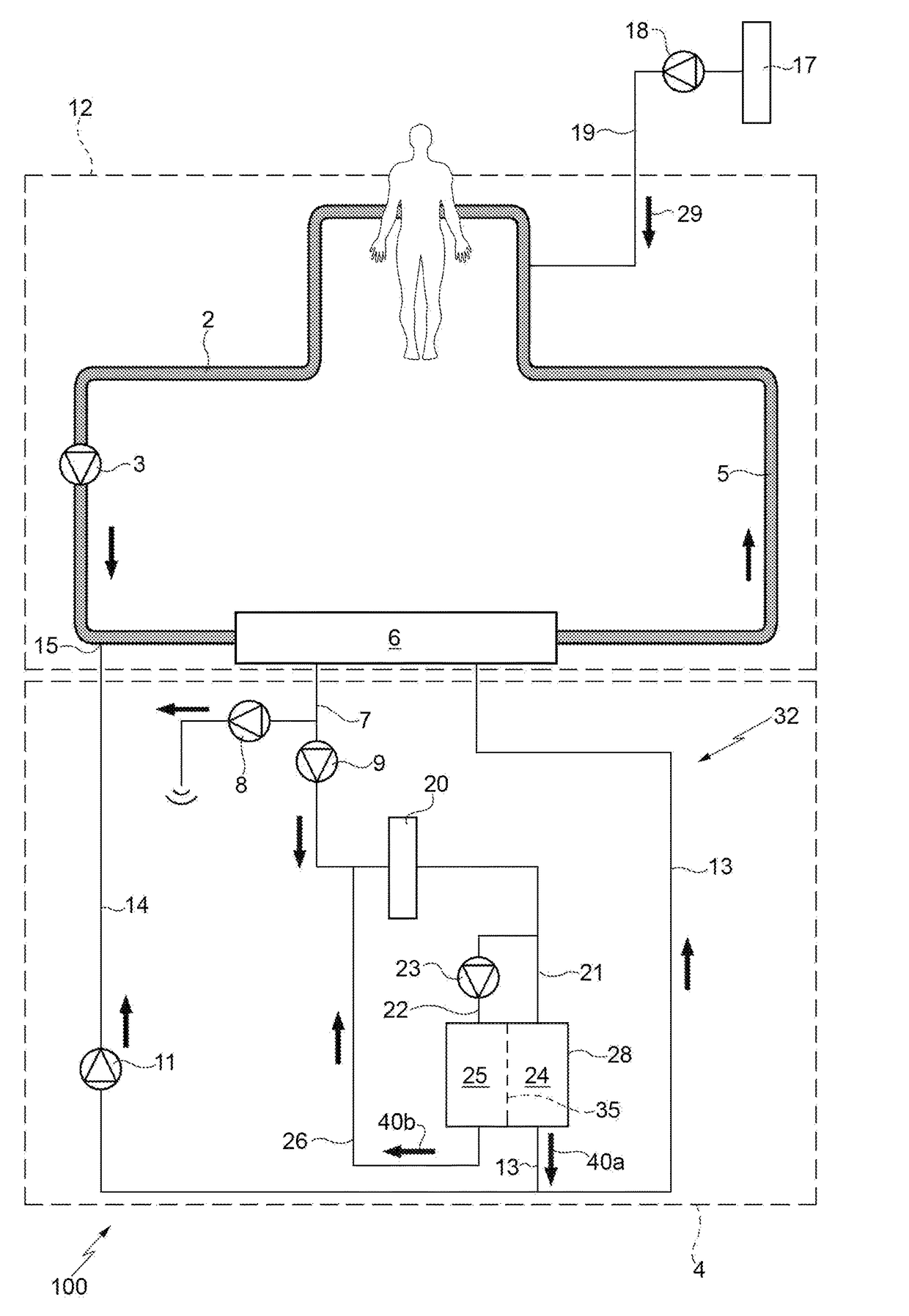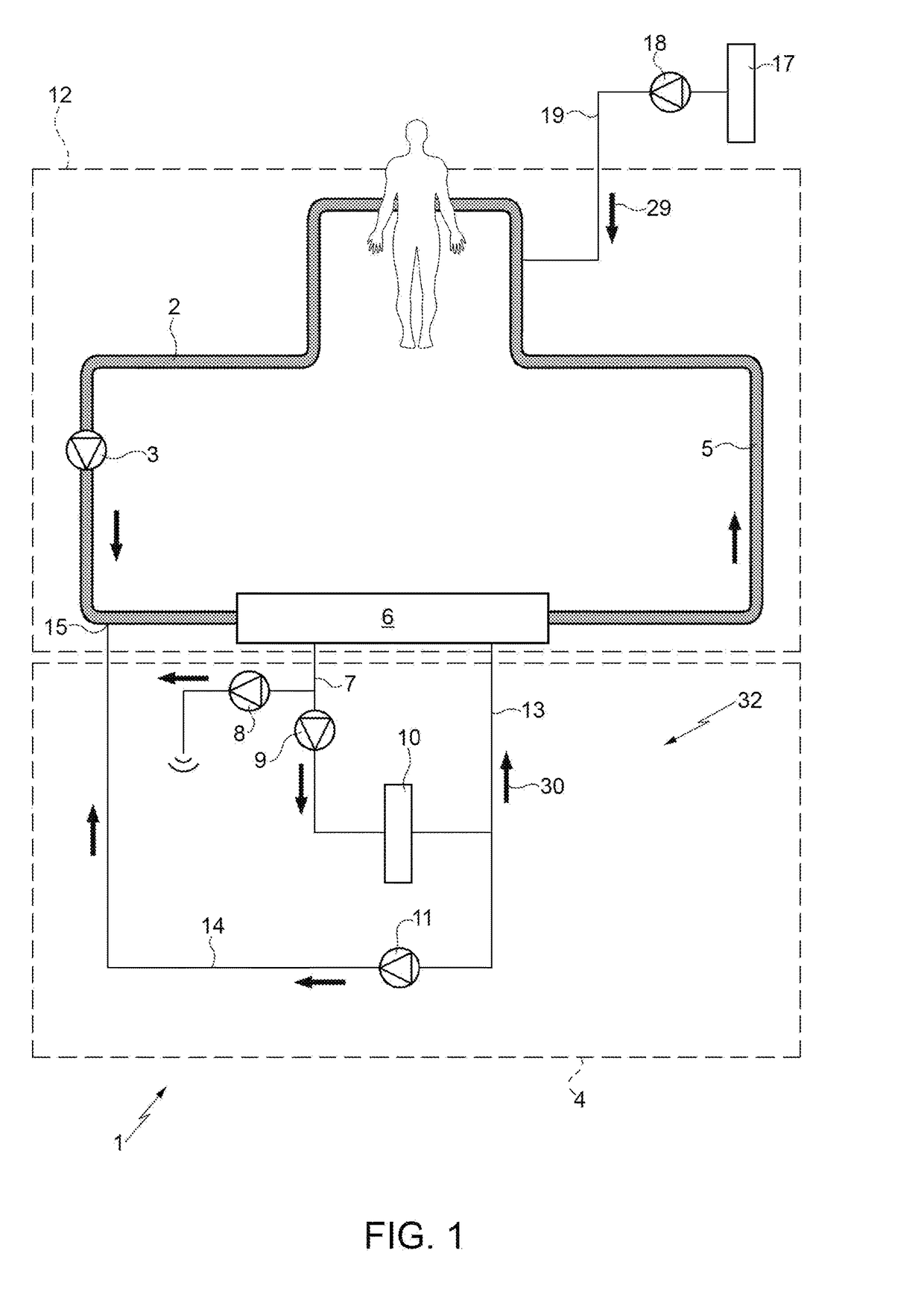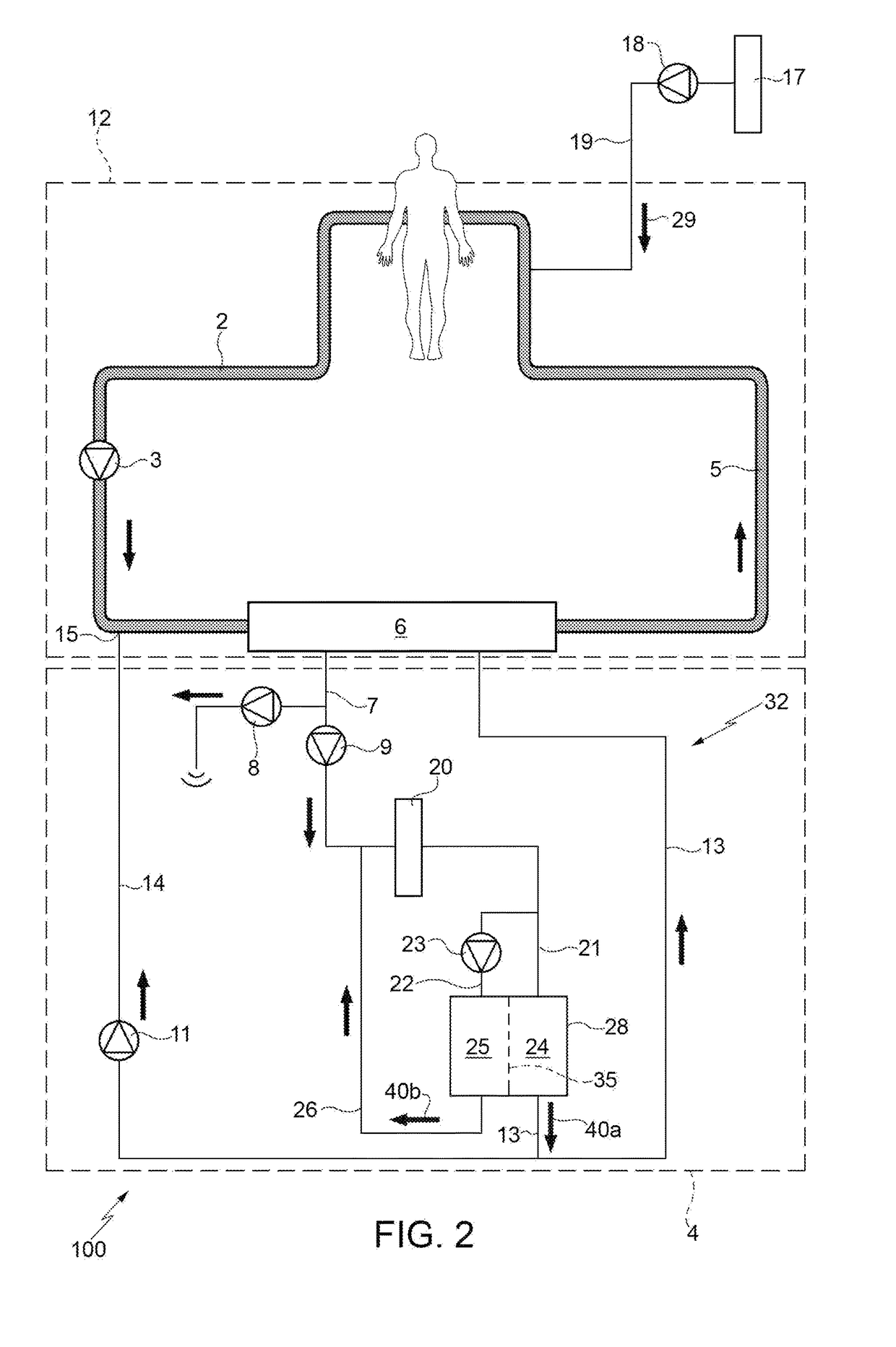Regional s coagulation system for an extracorporeal circulation circuit
a blood coagulation system and extracorporeal circulation technology, applied in the direction of other blood circulation devices, cation exchanger materials, separation processes, etc., can solve the problems of affecting the clinical effect,
- Summary
- Abstract
- Description
- Claims
- Application Information
AI Technical Summary
Benefits of technology
Problems solved by technology
Method used
Image
Examples
first embodiment
[0037]In FIG. 1 the number 1 indicates as a whole an extracorporeal circulation system according to the present invention.
[0038]The circuit 1 comprises a line for taking the blood 2 from the patient, on which a peristaltic pump 3 acts, a first filtering unit 6 and a line for returning the blood 5 to the patient, which define a main circuit 12.
[0039]In the embodiment illustrated in FIG. 1, the first filtering unit 6 is a haemofilter.
[0040]The circuit 1 further includes a calcium removal assembly 4 which comprises a cartridge 10 including an ionic exchange cationic resin for the calcium previously loaded with a solution of sodium, potassium, chlorine and bicarbonate.
[0041]In use, the blood removed from the patient via the line 2 is sent, by the action of the pump 3, to the haemofilter 6. The haemofilter 6 separates the plasma water which is conveyed via the line 7, by means of the pump 9, to the ionic exchange cationic resin 10 in which the calcium ions are removed, generating a solut...
second embodiment
[0059]FIG. 2 illustrates the extracorporeal circuit 100 according to the present invention. The details similar or identical to those already described are indicated for the sake of simplicity by the same reference numbers.
[0060]In this embodiment, the circuit 100 comprises a calcium removal assembly 4 which in turn comprises an electrodialyser 28. In particular, the blood removed from the patient via the line 2 is sent, by the action of the pump 3, to the first filtering unit 6, in this case, for example, a haemodiafilter. The haemodiafilter 6 separates the plasma water which is conveyed via the line 7, by means of the pump 9, to the electrodialyser 28.
[0061]As illustrated in FIG. 3, the electrodialyser 28 is provided with a first electrodialysis chamber 24 and a second electrodialysis chamber 25 separated by an ionic membrane 35.
[0062]Each chamber is separated from the corresponding electrode 31,33 by means of a bipolar membrane 36,37. The positive electrode 31, or anode, is arran...
PUM
| Property | Measurement | Unit |
|---|---|---|
| biocompatibility | aaaaa | aaaaa |
| molecular weight | aaaaa | aaaaa |
| concentration | aaaaa | aaaaa |
Abstract
Description
Claims
Application Information
 Login to View More
Login to View More - R&D
- Intellectual Property
- Life Sciences
- Materials
- Tech Scout
- Unparalleled Data Quality
- Higher Quality Content
- 60% Fewer Hallucinations
Browse by: Latest US Patents, China's latest patents, Technical Efficacy Thesaurus, Application Domain, Technology Topic, Popular Technical Reports.
© 2025 PatSnap. All rights reserved.Legal|Privacy policy|Modern Slavery Act Transparency Statement|Sitemap|About US| Contact US: help@patsnap.com



